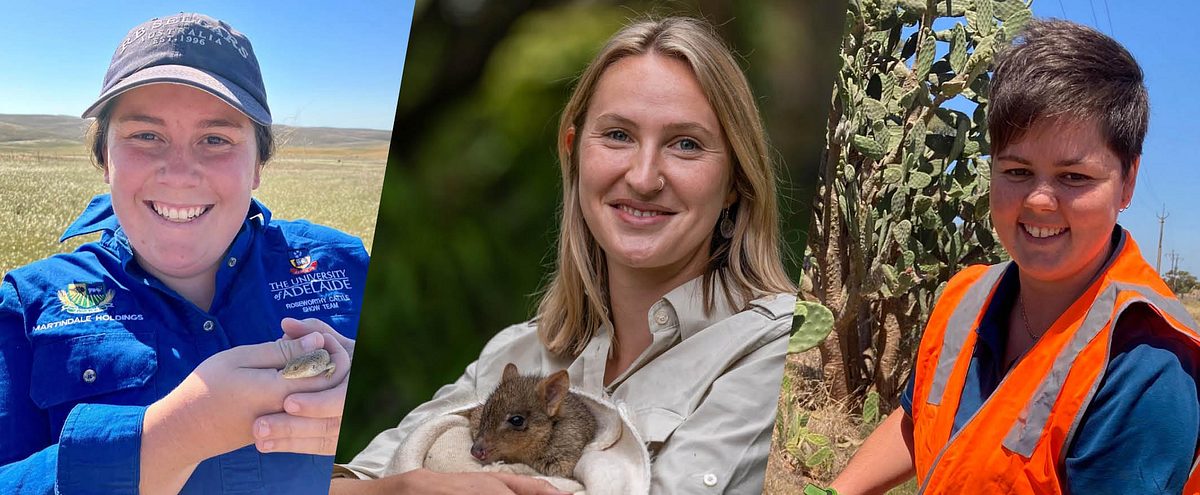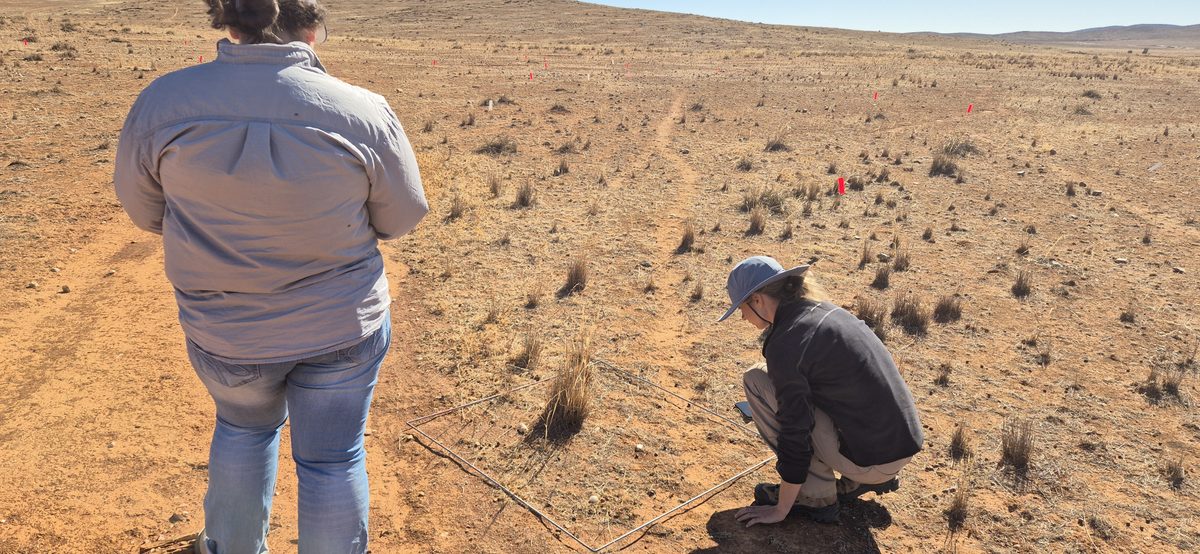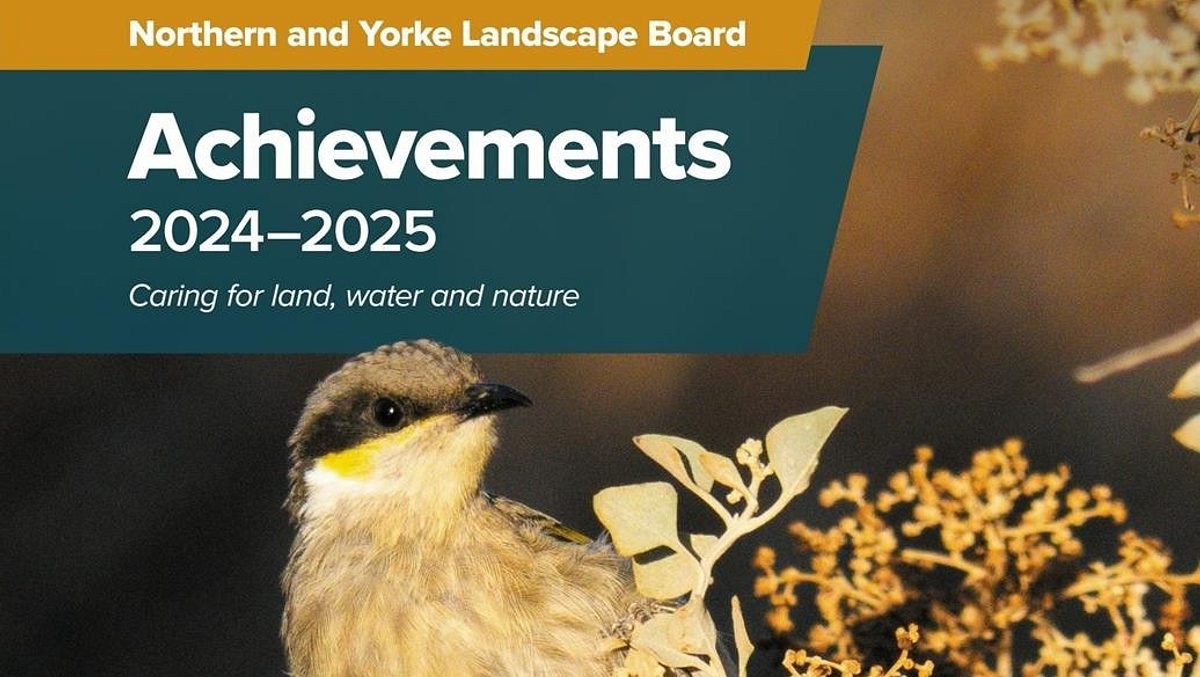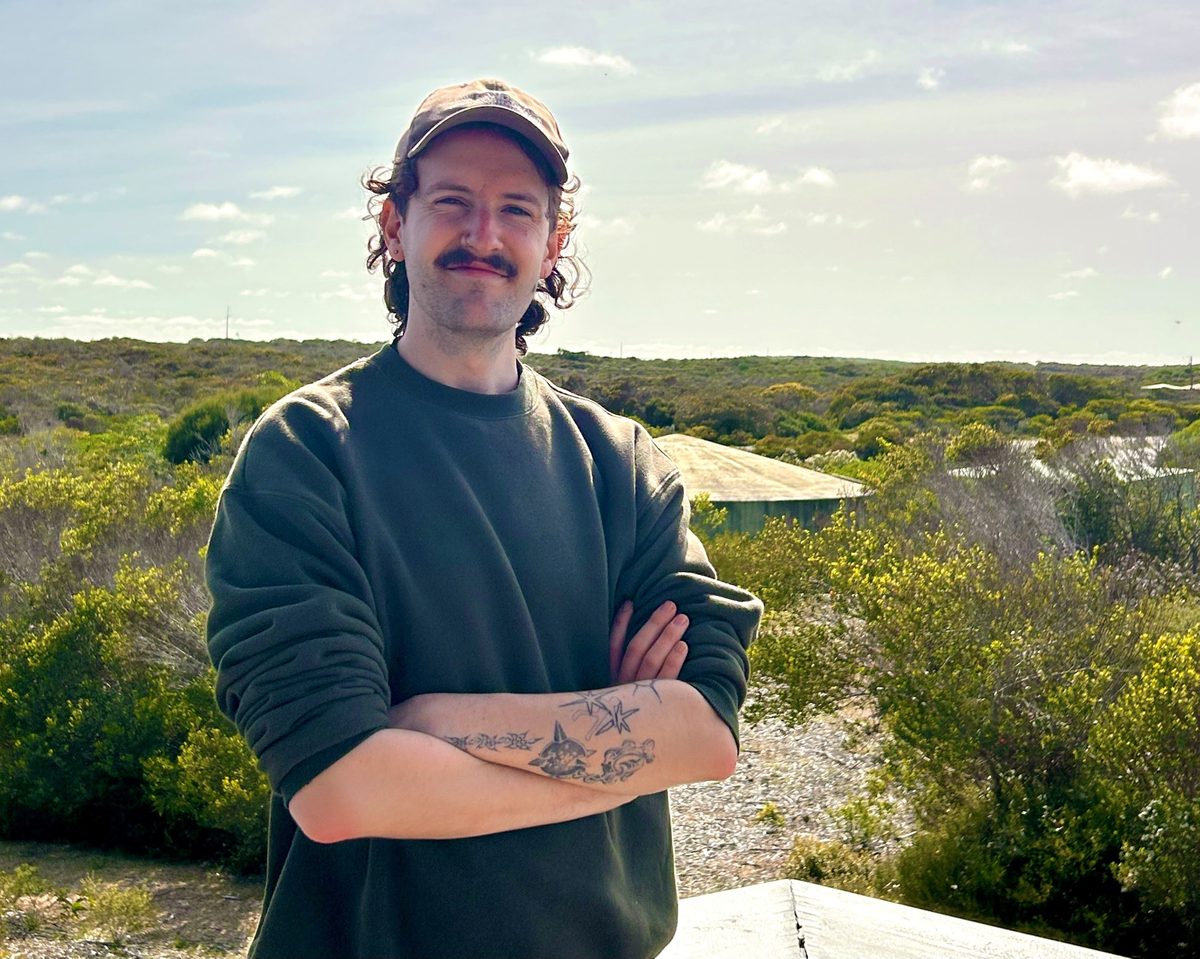Women scientists leading the way in Northern and Yorke

One of the aims of International Day of Women and Girls in Science is to spotlight role models and inspire the next generation. With 14 women scientists in our team, we’re spoilt for choice.
This year we interviewed three of the science leaders working in the Northern and Yorke region to find out what inspired their career journey and what they love about their jobs.
Claire Hartvigsen-Power, Marna Banggara project ecologist
Growing up ecologist Claire Hartvigsen-Power didn’t think science interested her until she discovered she could make a career out of her passion for the environment.
Most of Claire’s childhood was spent outdoors and her environmentally conscious parents helped her to foster a deep respect for nature. She went on to study a Bachelor of Science (Wildlife Conservation Biology) and completed an Honours in Ecology and Environmental Science at the University of Adelaide.
Claire now works as the project ecologist for the Northern and Yorke Landscape Board’s Marna Banggara project. It’s an ambitious rewilding project that aims to reintroduce locally-extinct wildlife to southern Yorke Peninsula and rejuvenate the landscape. Claire counts her involvement in the return of yalgiri (brush-tailed bettongs) to Dhilba Guuranda-Innes National Park during the past few years as one of her career highlights. “Seeing the yalgiri settle into their new home is so rewarding, and really makes all the hard work worth it!” Another career-defining moment was working with Anangu Rangers in the Anangu Pitjantjatjara Yankunytjatjara Lands to research a rediscovered and undescribed species of frog.
There are many aspects of her work that Claire loves. Getting to work outside in some of the most spectacular natural landscapes is always a joy and a highlight, as is her work with First Nations people. “Working together on Country with First Nations peoples to protect and conserve threatened species, and being present for the continuation of cultural practices and values is such a privilege. I feel incredibly lucky to have experienced this,” said Claire. “And at the end of the day, doing this work makes me hopeful that I can make a tiny positive impact on the world.”

Morgan McCallum, Rangelands landscape officer
Growing up in Quorn, and then Booleroo Centre later in her schooling, Morgan was surrounded by farming and agriculture. “I had a major passion for animals and more specifically horses and livestock," she said. "
Morgan studied a Bachelor of Science (Animal Science) degree at the University of Adelaide’s Roseworthy Campus and then landed a livestock and sustainable farming systems research role on Eyre Peninsula.
“Fast forward to today, I’m back in the Rangelands region and working as a landscape officer out of the Orroroo Office. I really enjoy being out and about in the region, working with our local landholders, and carrying out pest plant and animal control.”

Emily Kakoschke, Mid North landscape officer
Raised on a hobby farm and spending holidays in the Riverland, Emily was always fascinated by nature’s connections – for example learning where to find the best fishing spots based on the plants growing along the riverbank, the flow velocity and the water temperature.
And now in her work, this fascination has only flourished. “My appreciation for how our interactions with the environment creates cause and effect has grown,” she said. “Implementing small, informative changes in our household, gardens, paddocks, or crops can have larger impacts on our neighbours, community and the wider environment.”
Since studying a Bachelor of Science (Wildlife Conservation Biology) degree, majoring in Conservation Ecology, Emily’s career hasn’t quite panned out as she expected. “I always thought I would either be an ecologist or zoologist,” she said. “But my passion in science shifted towards our flora and plant physiology and soil sciences.”
She has worked at the Northern and Yorke Landscape Board for more than 2 years and says job satisfaction often comes from the small wins.
“When I meet with a landholder, they’ll tell me about their ideas and goals for their property, but they’re not always sure how to get there. I’m the bridge that connects the scientific information with effective practices that are tailored to the landholders’ goals.”



